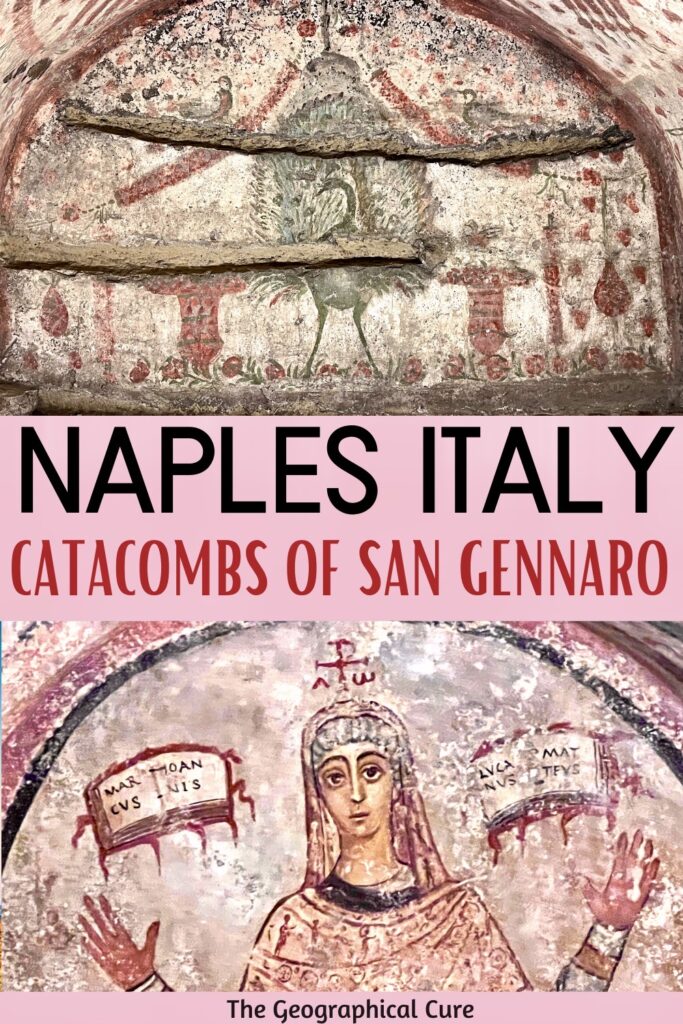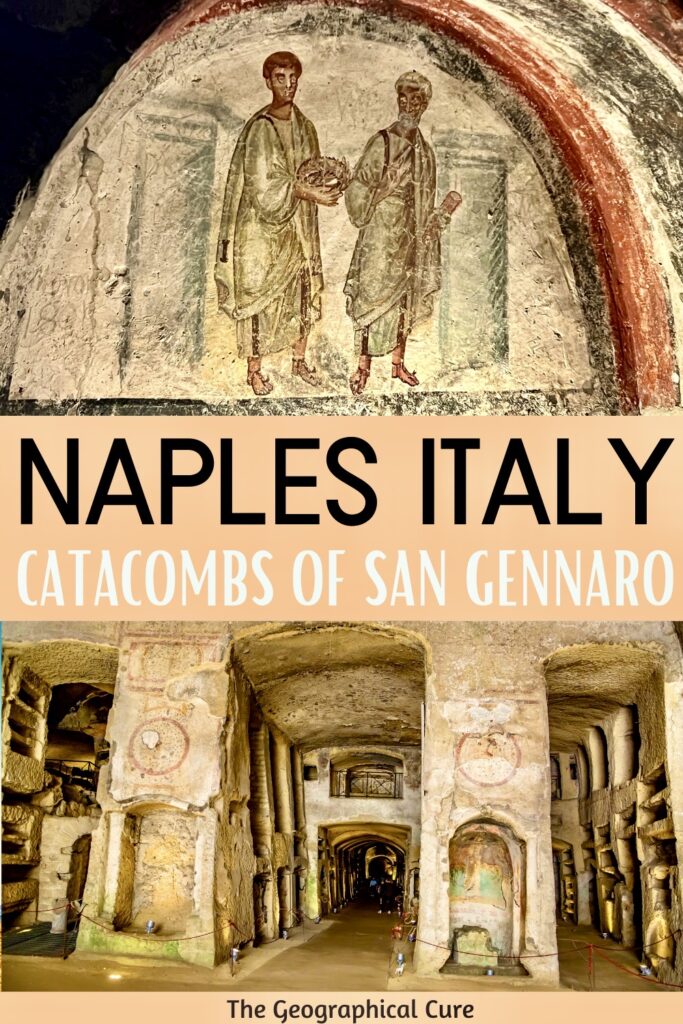Looking for something unusual to do In Naples? This is the ultimate guide to visiting the Catacombs of San Gennaro, or Catacombe di San Gennaro.
The catacombs are an ancient underground burial site located in northern Naples. They’re the most important catacombs in southern Italy and an intriguing historic site.
The catacombs are named after Saint Gennaro, the patron saint of Naples. He was buried in the catacombs in the 5th century.
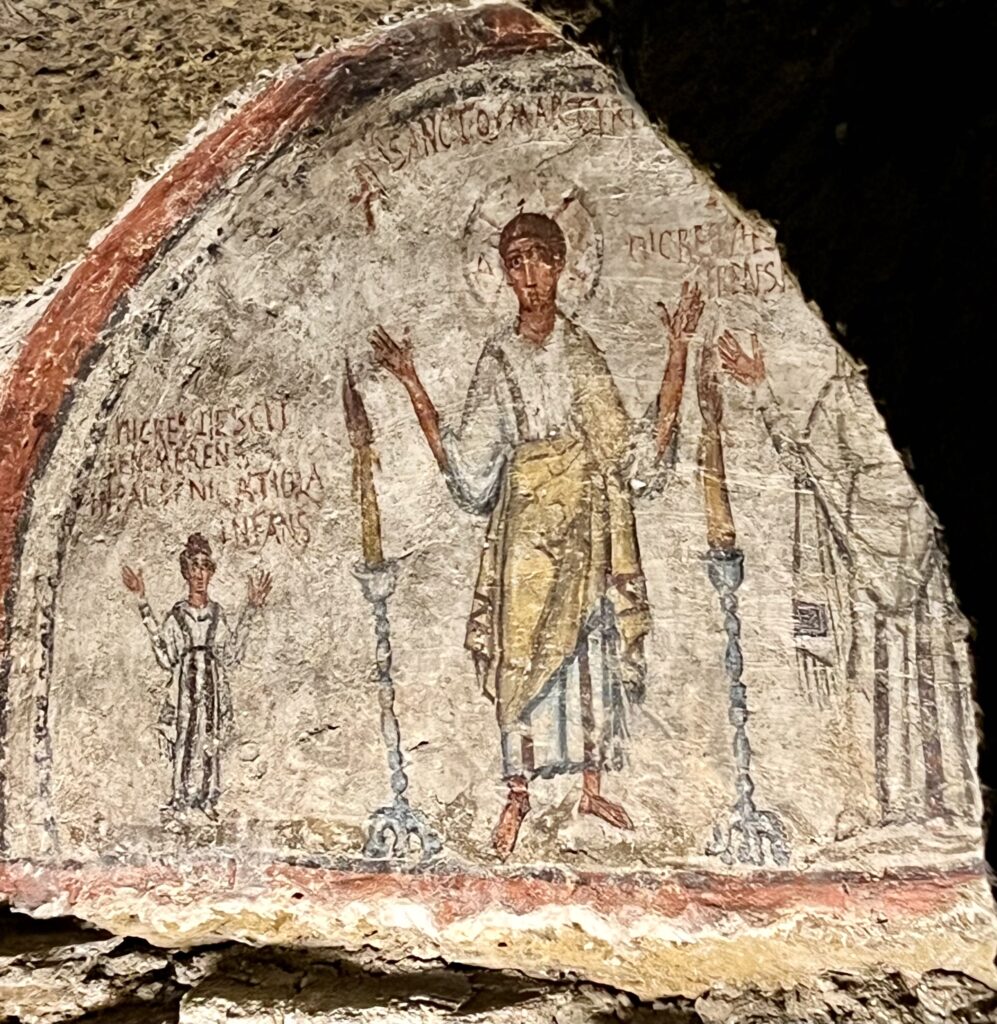
The catacombs were used in the early Christian period from the 2nd century A.D. to the 5th century A.D. They contain the remains of 3,000 early Christians, including bishops, priests, and ordinary believers.
The catacombs consist of a network of underground tunnels, tombs, and chambers that were carved out of the soft volcanic tuff rock. They cover an area of more than 3000 square meters.
The catacombs offer a unique blend of art, architecture, and religious symbolism. You can explore tombs adorned with ancient frescoes, sculptures, and inscriptions. The well-preserved artworks depict biblical scenes, Christian symbols, and portraits of saints.
The San Gennaro catacombs are also distinct from other catacombs around the world. They are much more spacious, providing a more open and less confined atmosphere compared to others. And, while they are underground, they’re not as deep and hence seem less claustrophobic.
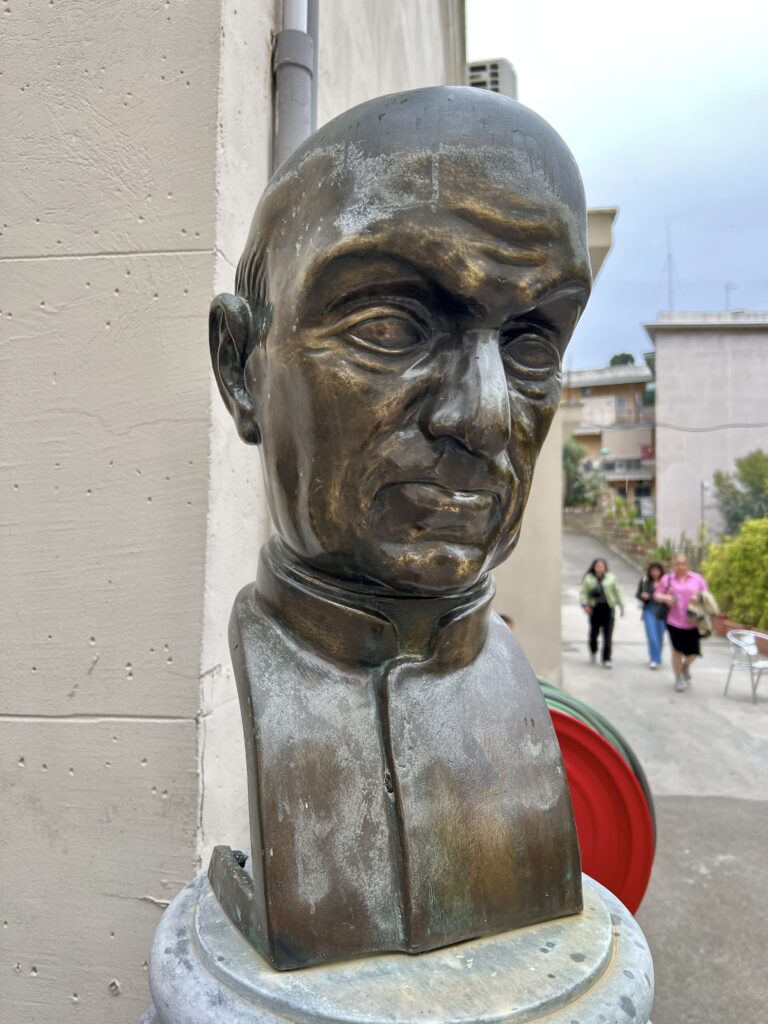
History of the Catacombs of San Gennaro
People often think of catacombs as mysterious places. Places where Christians hid from authorities or practiced secret rituals.
But that perception is far from true. Christians considered the catacombs to be a cemeteries or resting places.
Building them below ground was practical, safer, and cheaper. The early Christians also preferred underground tombs to traditional Roman cremation.
Fossori (removers) were hired to dig corridors and make tombs with rich decorations. The quality of the works discovered suggest the fresco painters were highly skilled.
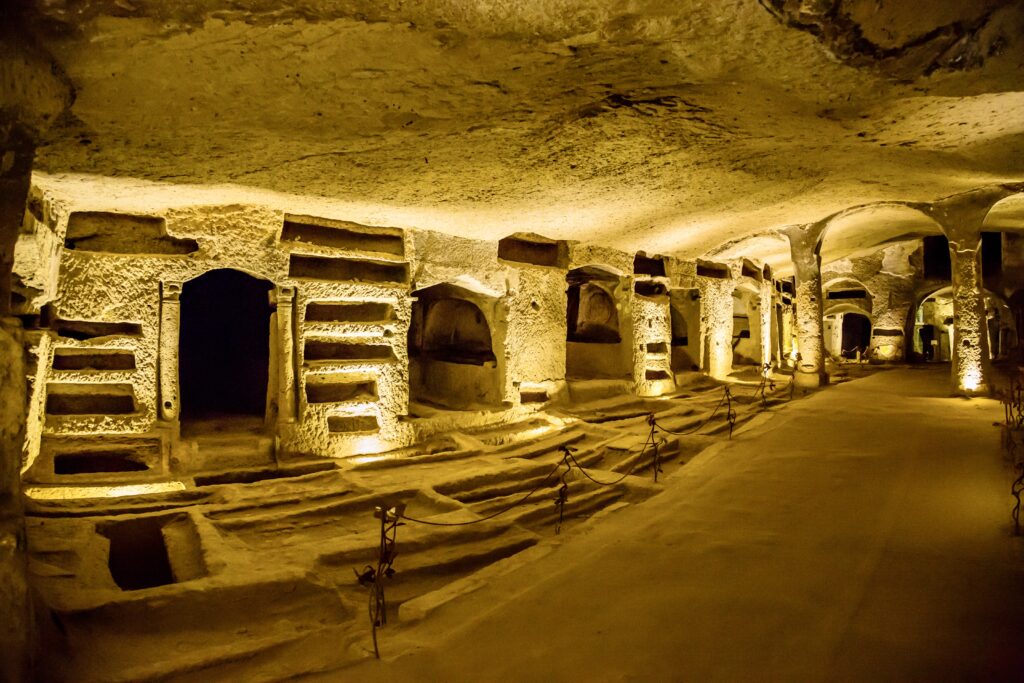
There were three types of burial tombs in catacombs:
- terragne, tombs dug directly into the ground
- loculi, rectangular tombs vertically hung along walls and corridors
- arcosoli, tombs with an arched shape
The arcosoli were the most expensive and were decorated with frescos and mosaics. To reflect as much light as possible in the dark confines, the floors were once covered in white marble.
The catacombs were first used by pagans. But this changed when San Gennaro was buried there in the 5th century A.D. He was a revered Christian martyr.
San Gennaro was beheaded in 3rd century A.D. during the persecutions of Roman Emperor Diocletian. He’s also known for the miracle of his blood, which is said to liquefy three times a year in the presence of the faithful.
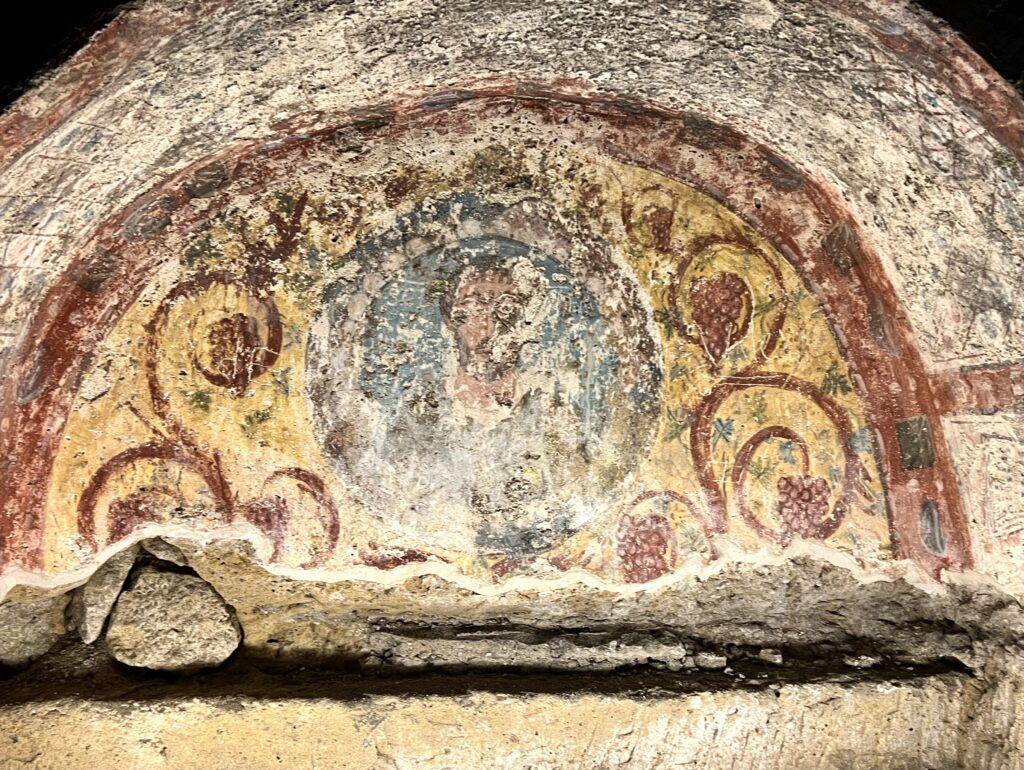
With the burial of San Gennaro, the catacombs quickly became a pilgrimage destination for Christians. His remains and relics stayed there until they were transferred to the Duomo in the 9th century.
Over the centuries, the catacombs fell into disuse and were largely forgotten. During the period from the 13th to the 18th centuries, the tombs were looted.
To protect the remains and ensure their preservation, the state decided to empty the tombs. They transferred the majority of the bodies to the nearby Fontanelle Cemetery, which is in the Catacombs of Gaudisio. It’s a mass grave, similar in type to the Paris Catacombs.
In the 19th century, the catacombs were restored and opened to the public. Today, they are one of the most popular tourist attractions in Naples. They offer visitors a glimpse into the early Christian history of Naples.
On a visit, you can explore the underground tunnels and see the tombs and burial niches. The catacombs also contain a number of ancient frescos and other artworks that offer insight into the early Christian iconography and symbolism.
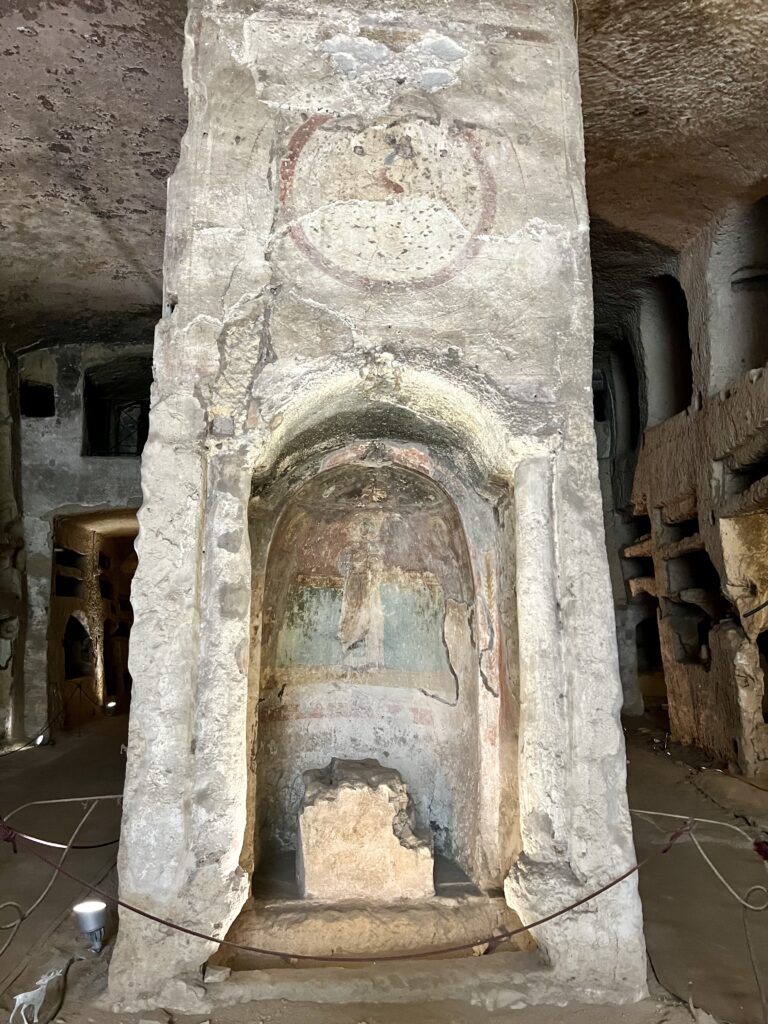
Guide To The Catacombs Of San Gennaro: What To See
The Catacombs of San Gennaro are a popular attraction in Naples. It’s best to pre-book a timed entry ticket in advance. There are tours in English and Italian.
When you arrive, you enter a modern building. You need to check in at the ticket desk. At the time on your ticket, your tour will be called. You exit the building and head down some stairs to arrive at the catacombs’ entrance.
The catacombs consist of two interconnected main chambers: the Lower Chamber and the Upper Chamber.
Your visit begins in the Upper Chamber. But the Lower Chamber is perhaps the real highlight, with its ancient frescos.
Here’s what you can’t miss on a visit to the Catacombs of San Gennaro.
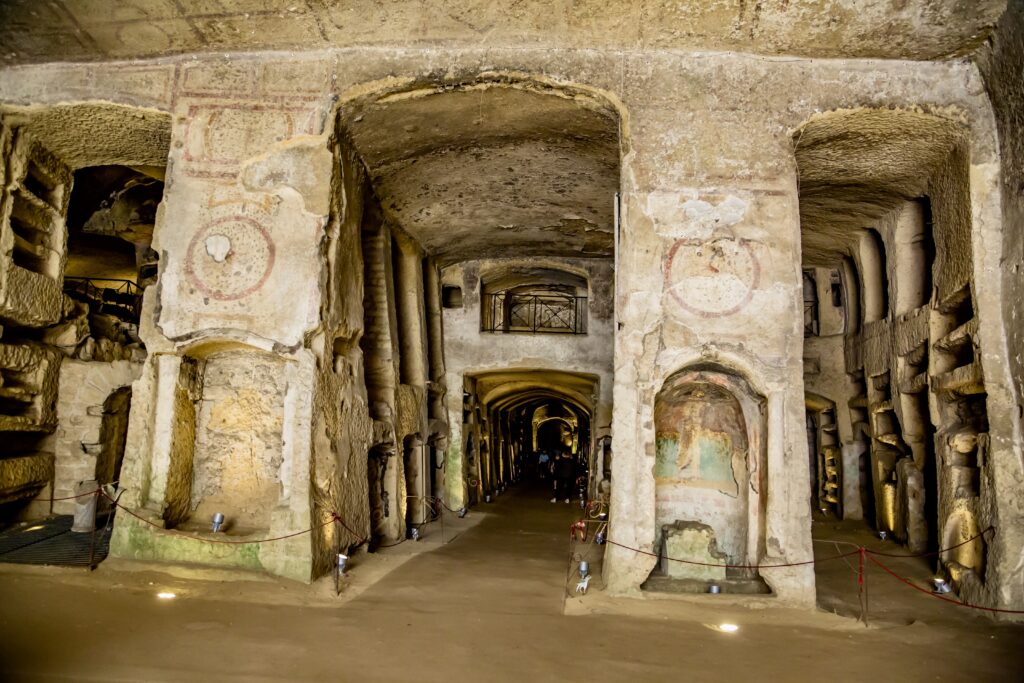
Lower Chamber
The Lower Chamber is the oldest part of the catacombs, dating back to the 3rd century A.D. It’s also known as the Crypt of San Gennaro.
Access to this level is via a vast trapezoidal room. This is likely where religious rites were held. There are numerous loculi in this level.
You can tell it has pagan origins because of the absence of Christian symbols. The frescos are beautiful. They are in Pompeiian style with red, purple, light blue, and ochre yellow colors.
READ: Guide To Visiting Pompeii
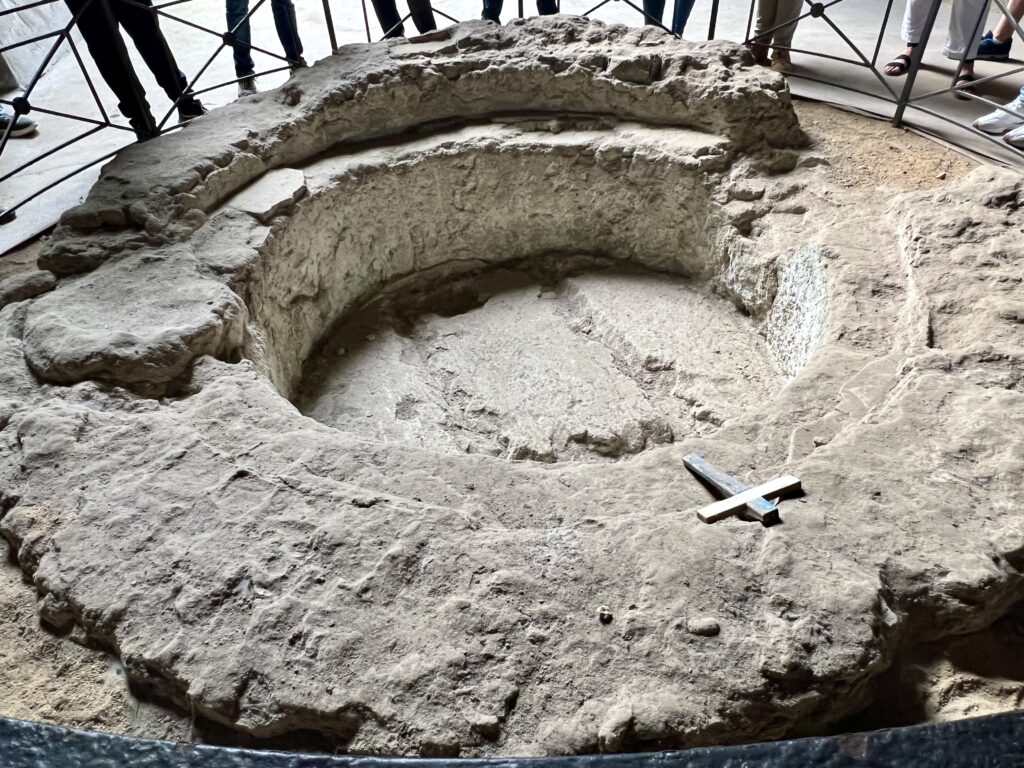
Baptismal Font
In the center of the Lower Chamber is a large baptismal font. It was created in 762-766 A.D. after being commissioned by Bishop Paul II.
The font was once covered in marble. It was used to celebrate the sacraments of the birth of Christianity during the vigil of Easter.
The fact that people were actually baptized in the catacombs means that they were treated as a cathedral. So, they were both a burial place and a place of worship.
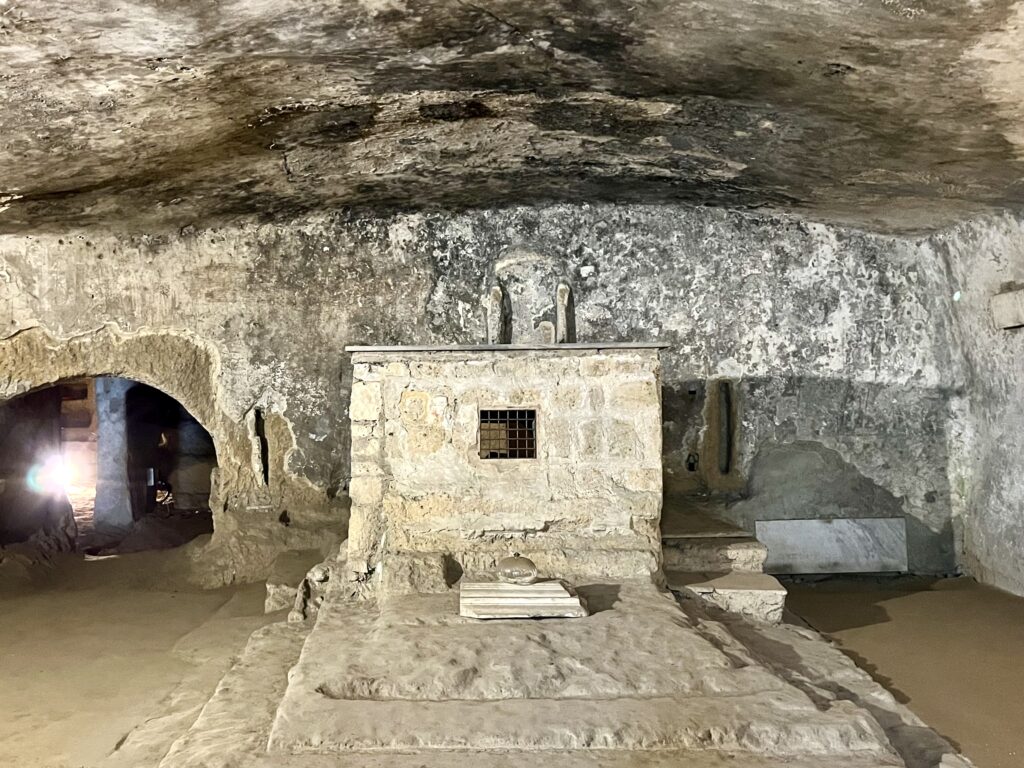
Basilica of Sant’Agrippino
Long before Gennaro, the patron saint of Naples was Sant’Agrippino.
He lived in the 3rd century and was the Bishop of Naples. The saint’s burial in the catacombs in 272 A.D. marked the first wave of Christian construction.
An entire basilica was created to venerate the saint. There was an episcopal pulpit of tuff, a presbytery fenced with marble barriers and pillars, and an altar above the tomb of the saint.
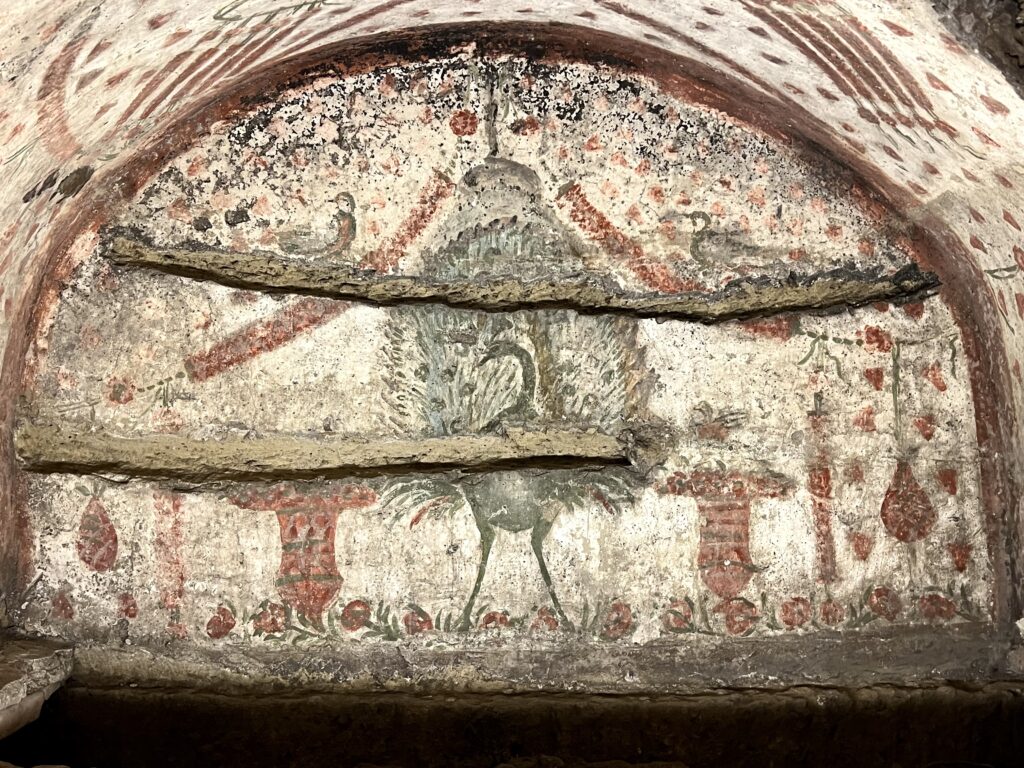
Frescos
The Lower Chamber is known for its famous frescos. They depicts scenes from the life of Christ, various saints and martyrs, biblical stories, and symbolic imagery such as fish or peacocks.
One of the prettiest is the Peacock fresco. Dating from the 4th century A.D., the image portrays a peacock in a garden in bloom.
The peacock was sacred to Zeus’ wife Hera. It symbolized life awakening in spring and the immortality of the soul.
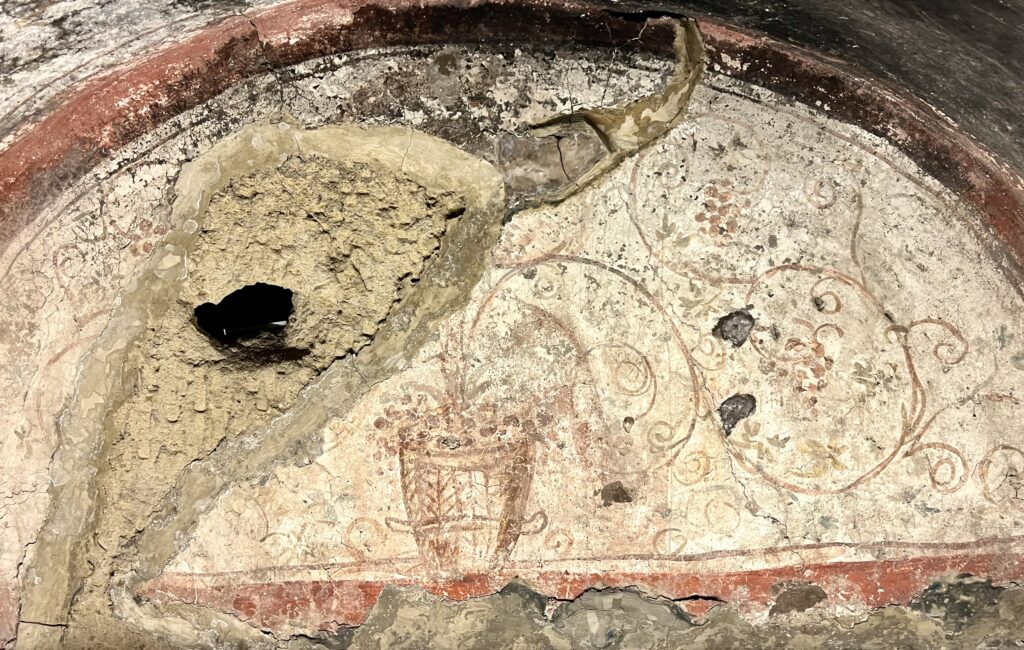
Another symbolic fresco is the Plant of the Vine fresco.
One typically thinks of grapes as a symbol of Bacchus. But that symbol, like so many pagan symbols, was adopted by Christians.
The vine represents Christianity. Jesus personifies its roots. The community of believers is the fruition of the vine.
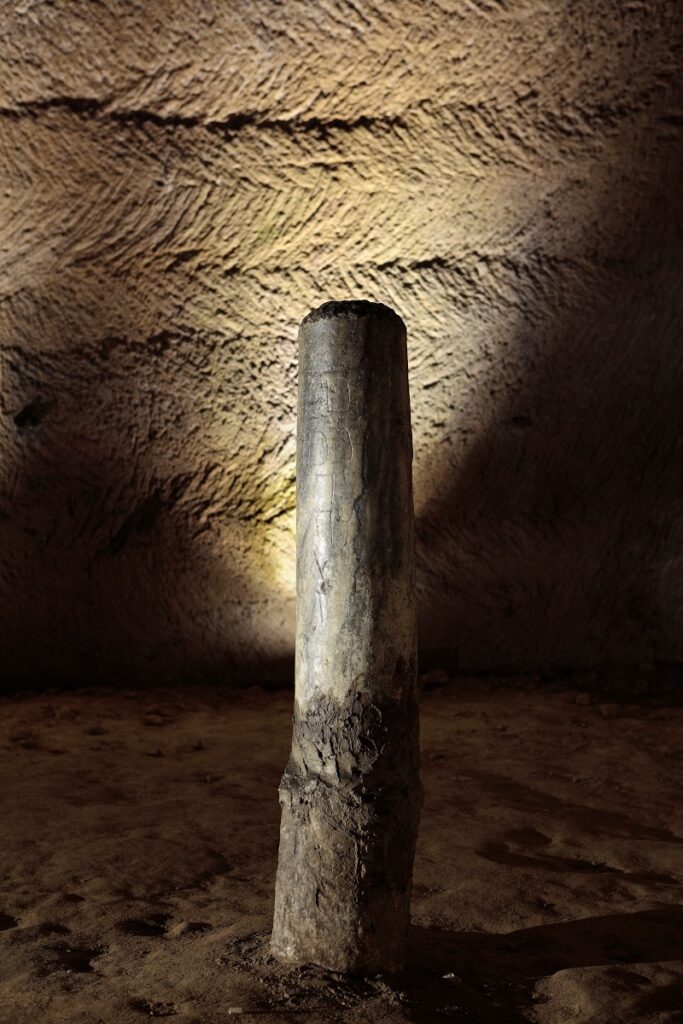
Monument to Priapus
The Monument to Priapus is in a room that looks like a pyramid-shaped well. In the middle is a structural element made of 2 columns of white marble , one bigger than the other.
It’s a phallus, dedicated to the god Priapus, who was a minor god of fertility and sexual pleasure. The son of Dionysus, Priapus is always depicted with a rampant member.
It seems odd, I know. Yet, phalluses were ubiquitous in Roman life. They represented wealth and fertility and also warded off the evil eye.
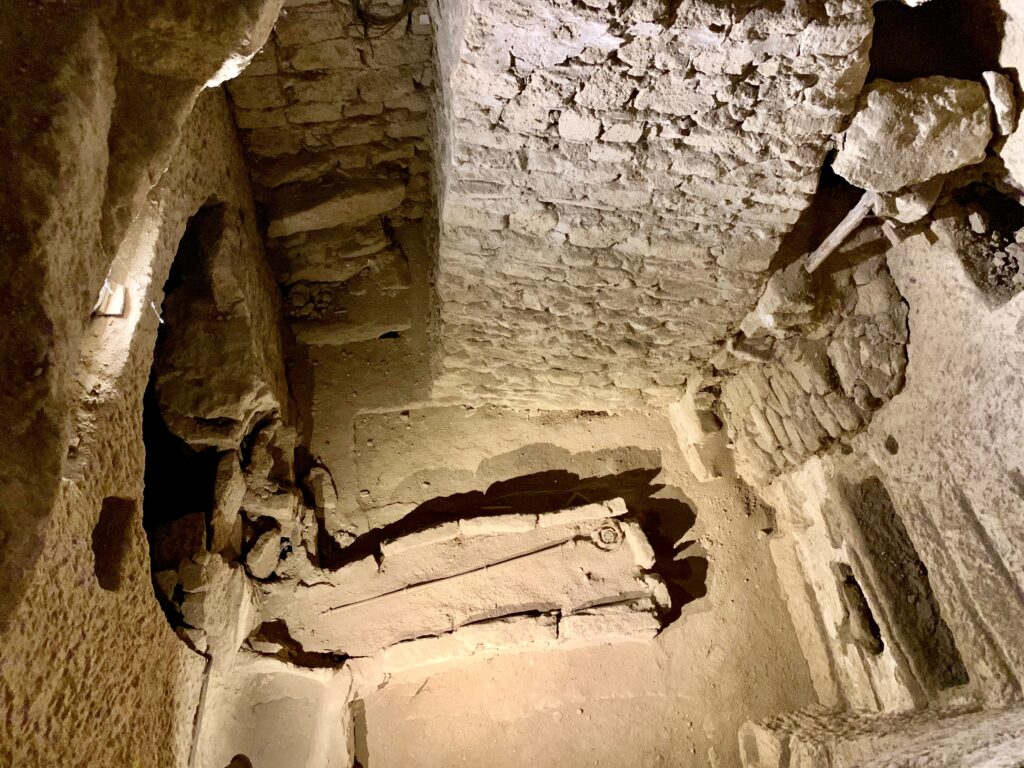
Tomb of San Gennaro
The saint’s tomb was only discovered in 1973. You can see it best from the vestibule of the Upper Chamber.
Gennaro’s body was transferred to a room in the catacombs between 413 and 431. Archaeologists know it was his burial chamber because of inscriptions and frescos found there.
The most important fresco is San Gennaro tra il Vesuvius e il monte Somma. It depicts the young martyr, with a halo, standing between the two mountains.
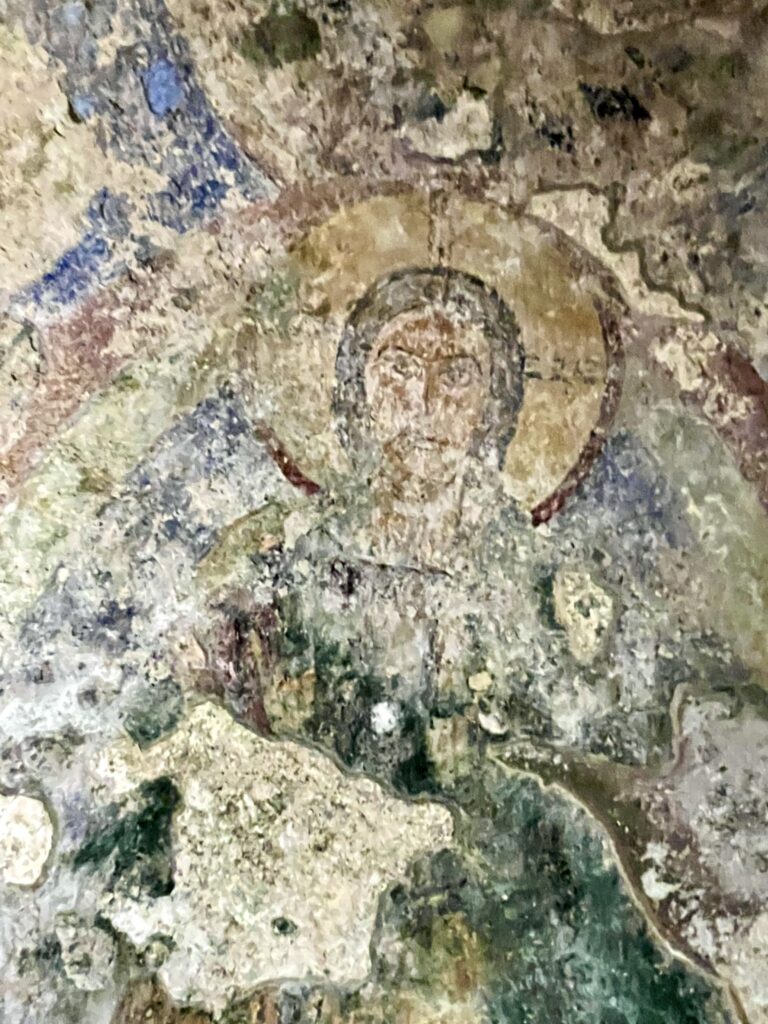
Upper Chamber
Upper Vestibule & Christ Pantocrater Fresco
The upper vestibule is the most ancient part of the Upper Chamber, dating back to the 3rd century. It’s a large room that was most likely a noble family’s chapel.
It contains some of the most ancient frescos in southern Italy. On the ceiling, you can see flowers, fruits, animals, and theater masks. There’s even an Adam and Eve fresco in which Adam admonishes Eve.
The vault of the vestibule has a Christ Pantocrater fresco. This was a typical image of Byzantine and early Christian art.
Christ stands in majesty in a mandorla among angels. Four rivers are at his feet and a deer drinks, a symbol of a life source. The figure opposite Christ may be Gennaro.
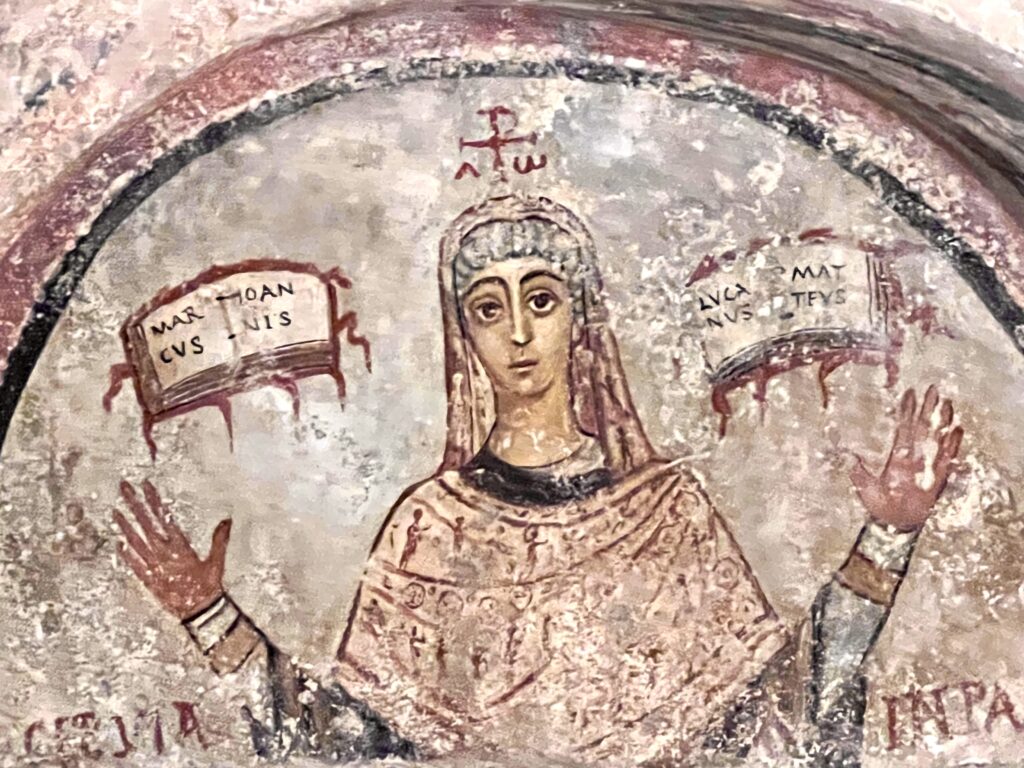
Female Frescos
Another surprising part of the catacombs is the presence of women as protagonists in the Christian community. You can see two images of women, Bitalia and Cerula.
Cerula is by far the better preserved fresco. It was only discovered in 2011.
Both frescos depict a woman with her hands raised in a prayer-like position. Above the hands, there are two open books bearing the names of the Evangelists.
This symbolism suggests that the women had knowledge and familiarity with gospels. They may have held important positions in the early Christian community, possibly even as a bishop.
This discovery sheds light on the significant role of women in the early Christian communities, challenging traditional assumptions about their involvement and leadership. It reveals that, at least in a transgressive Naples, women were actively engaged in the spread of Christianity and held positions of authority within the church.
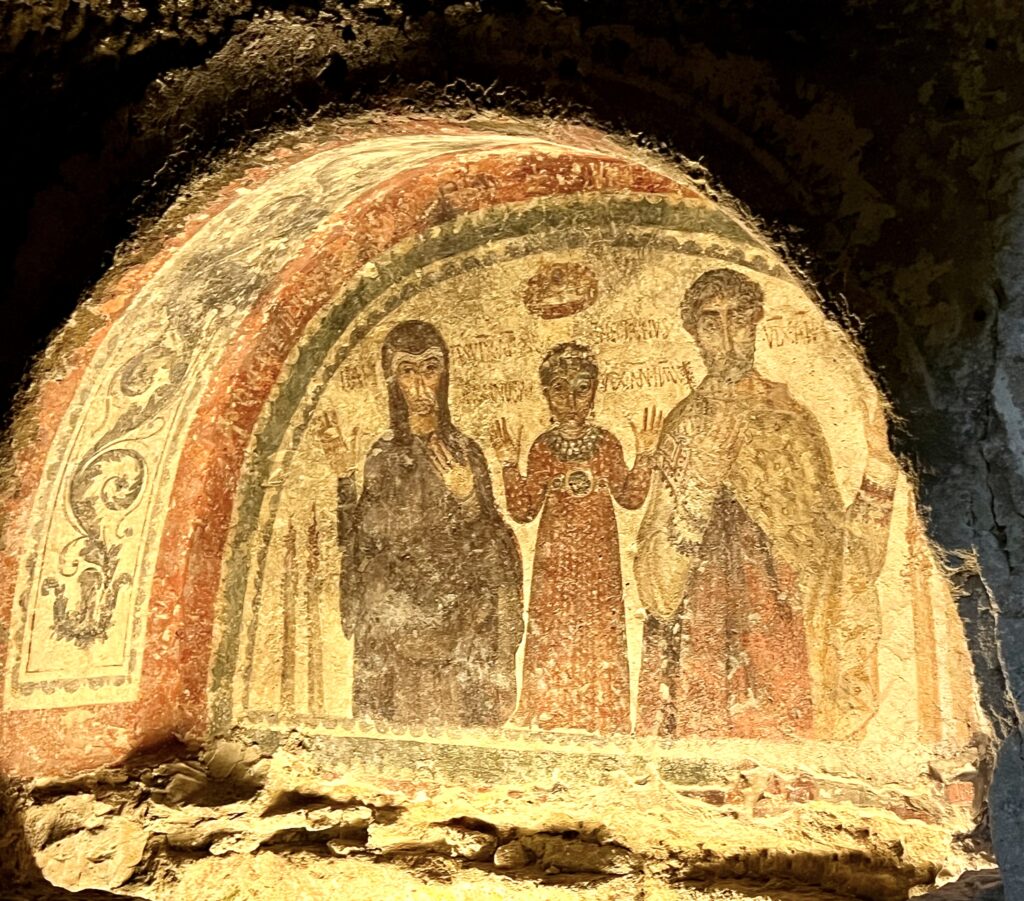
Family of Theotecnus Fresco
This remarkable fresco is one of the most important artworks in the catacombs.
It features a woman, a young girl, and a man. It holds immense historical significance because it bears the names of the family members and their ages at the time of their death.
The vibrant image graces the burial tomb of a wealthy family in the upper vestibule. This suggests that the family lived and died between the second or third century A.D. and the sixth century A.D.
Inscriptions on the fresco identify the family members — Ilaritas (mother), Nonnosa (daughter who died at just two years and 10 months), and Theotecnus (father). The fresco was repainted three times to reflect each death.
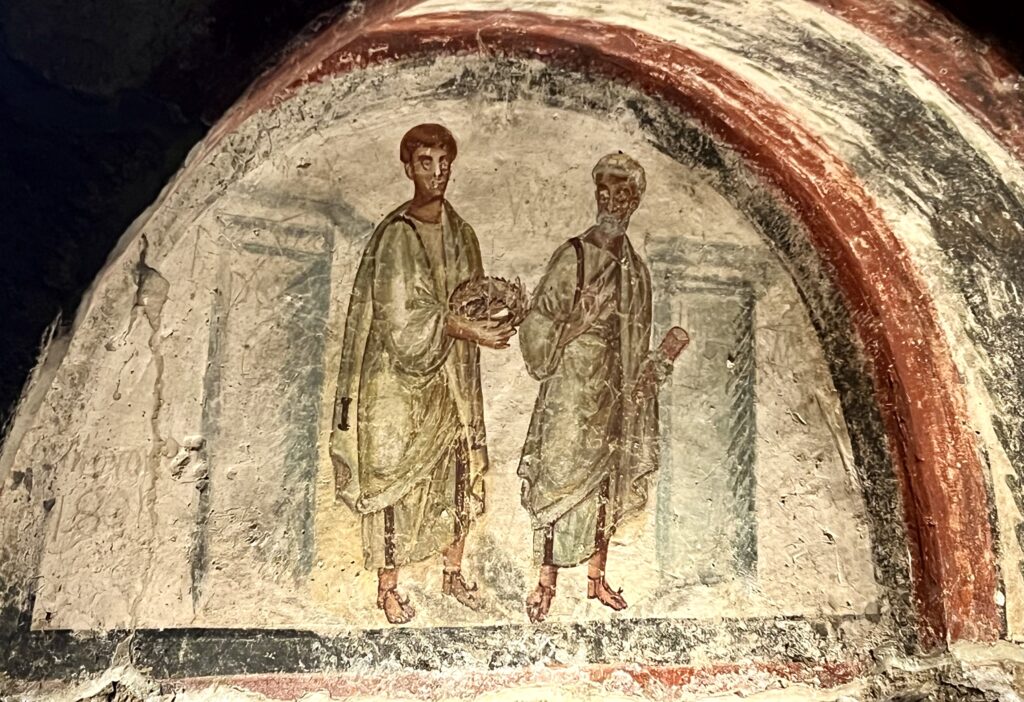
Fresco of Saints
Another beautifully preserved fresco is in the next cubicle. The saints Peter and Paul are shown at the doors of Paradise.
They receive and introduce the martyrs Gennaro and Lorenzo with laurel crowns, which symbolize the reward of paradise.
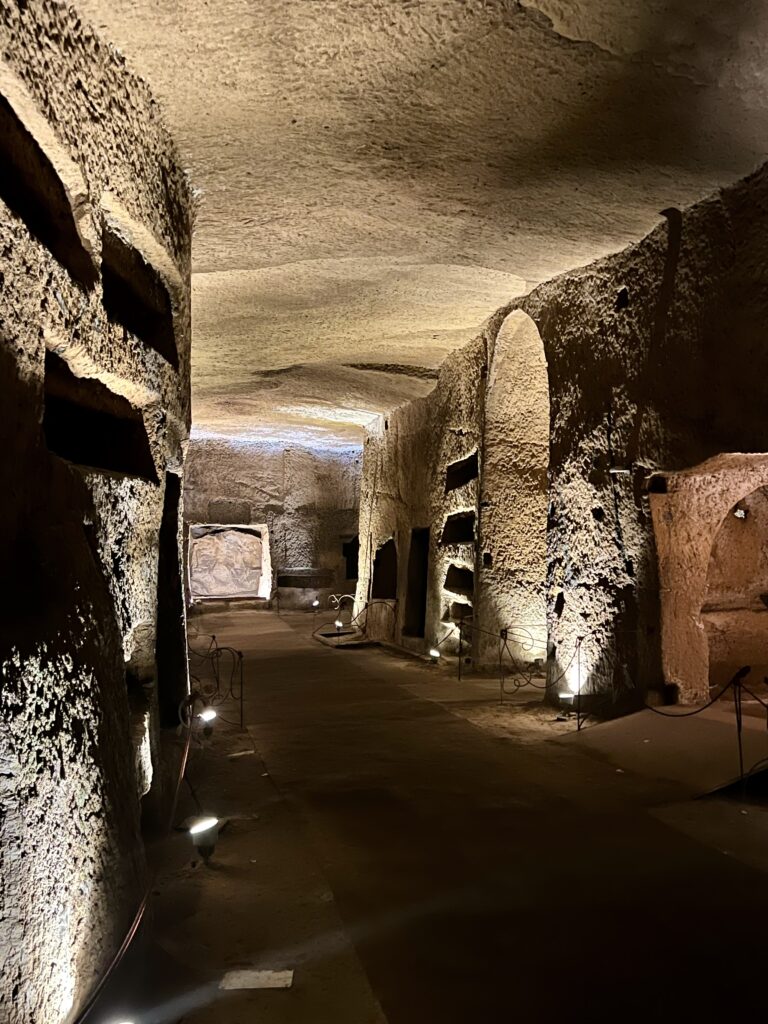
Crypt of the Bishops
Discovered in 1971, the Bishop’s Crypt is a significant area within the catacombs. It’s a designated space where 8 bishops were interred.
The crypt served as a place of reverence and remembrance for bishops who held important positions within the early Christian community. You can see some fairly well preserved mosaics.
Marytr’s Crypt
The Martyr’s Crypt is a small chapel that contains the remains of early Christian martyrs.
The chapel is decorated with frescoes and mosaics that depict scenes from the lives of the martyrs. It’s considered one of the most important early Christian artworks in Italy.
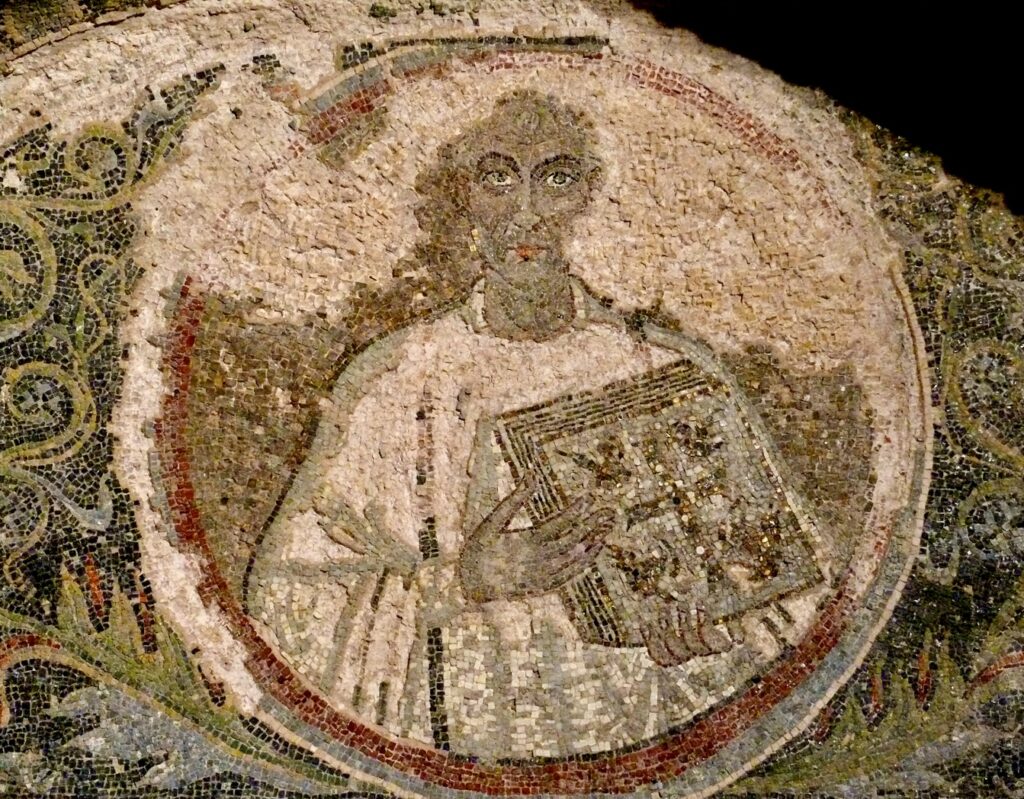
Mosaic of Quodvultdeus
This mosaic has an interesting backstory. It was discovered in the 1970s, buried in a crypt full of mud and debris.
Upon digging, the first thing the team of archaeologists saw was the eyes peering out of the darkness. Diary entries note that they heard voices. Spooked, they didn’t return to work for a week.
What they found was a mosaic portrait of Quodvultdeus, an African American Bishop of Carthage who was given sanctuary in Naples.
He’s portrayed in a golden clipeus, which is an oval shield-like decorative element. He wears a white tunic and holds a book with a cross of gems.
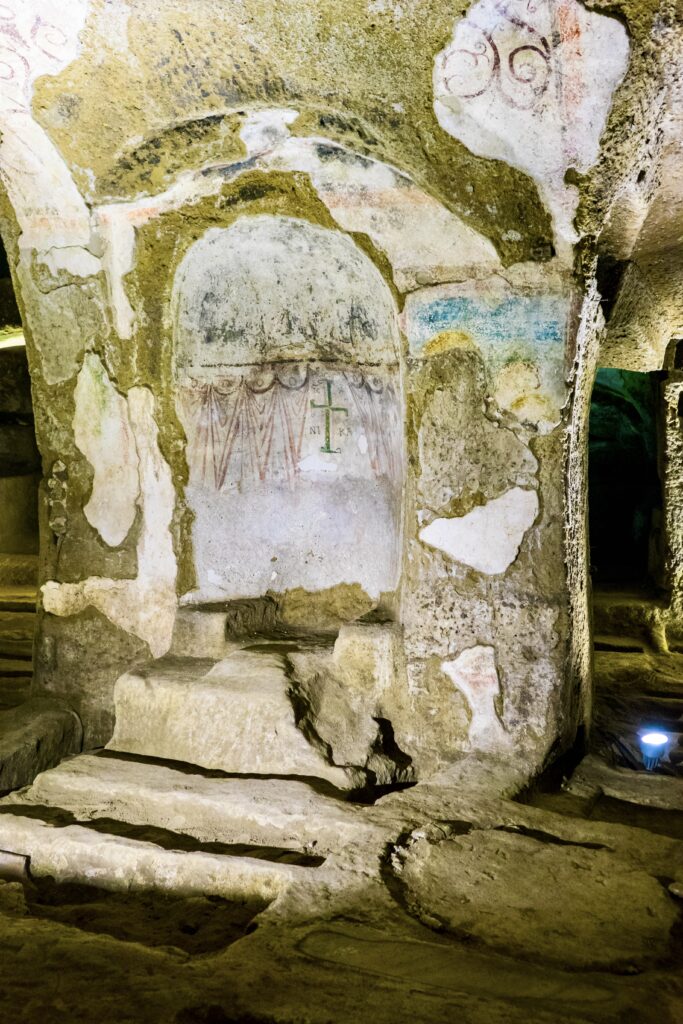
Triumph of the Cross
Until the 3rd century, the cross was simply an allusion to Christ’s death, not a cult object. That changed during the rule of Emperor Constantine from 306 AD to 337 AD.
A pillar in the Basilica Adjecta has a pillar with a painting of a hooked Latin cross. An inscription translates to “Jesus Christ wins.”
This could be a reference to the return of the true cross from the Persians. In any event, the cross is portrayed as a symbol of victory and salvation.
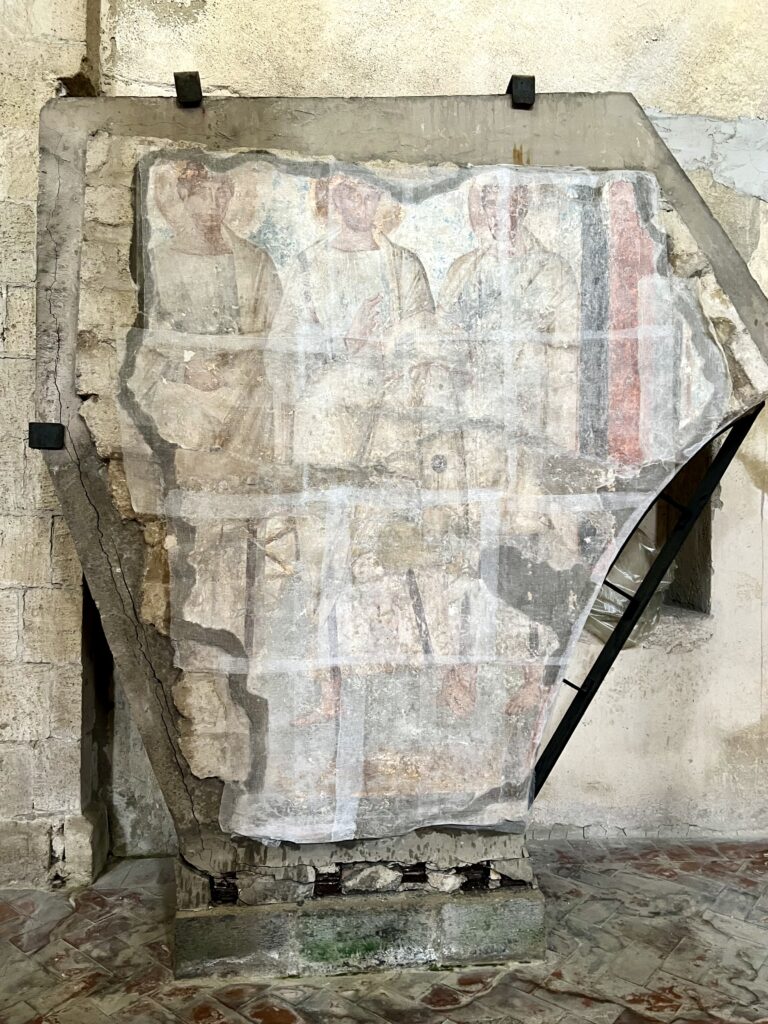
Basilica of San Gennaro Extra Moenia
You end your catacombs visit in the early Christian Basilica of San Gennaro Extra Moenia. The church was built in the 5th and 6th centuries. It retains its original layout, which consists of three large naves and a semicircular apse.
The church was conceived as a sort of entrance to the catacombs. It was intended to connect the city of the living with the city of the dead.
The church is simple, with a wooden ceiling and tiled floor. Previous Baroque decorations were removed during a restoration.
You can see some frescos in the vestibule depicting saints Gennaro and Aggrippino.
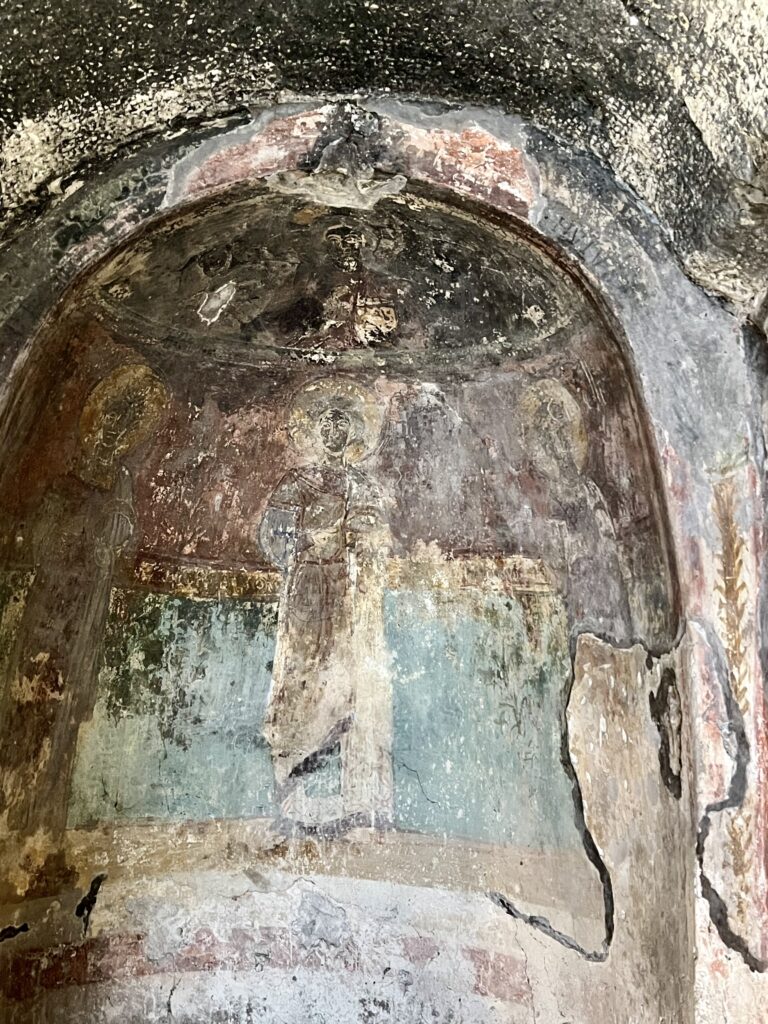
Practical Guide & Tips For The Catacombs Of San Gennaro
Address: Via Tondo di Capodimonte, 1380136 Naples.
If you want to use public transport, take metro Line 2 (Trenitalia) and get off at the Piazza Cavour station. If you want to take the bus, consult the bus schedule. The closest stop is Piazza Carlo III-Torre del Greco.
Opening Hours: Open daily from 10:00 am to 5:00 pm.
Tickets:
Ticket prices are 11 euros, seniors and students 7 euros, and under 18 is 5 euros. You can buy a combination ticket for the Catacomb of San Gennaro and the Catacombs of San Gaudioso. The latter is 1 kilometer from San Genaro.
The ticket price includes a guided tour. You cannot visit on your own.
The tour lasts a bit less than an hour. You do the upper basilica and then the lower basilica. The tour ends in the 5th century Basilica of San Gennaro.
You can pre-book a ticket on Tiqets or Get Your Guide.
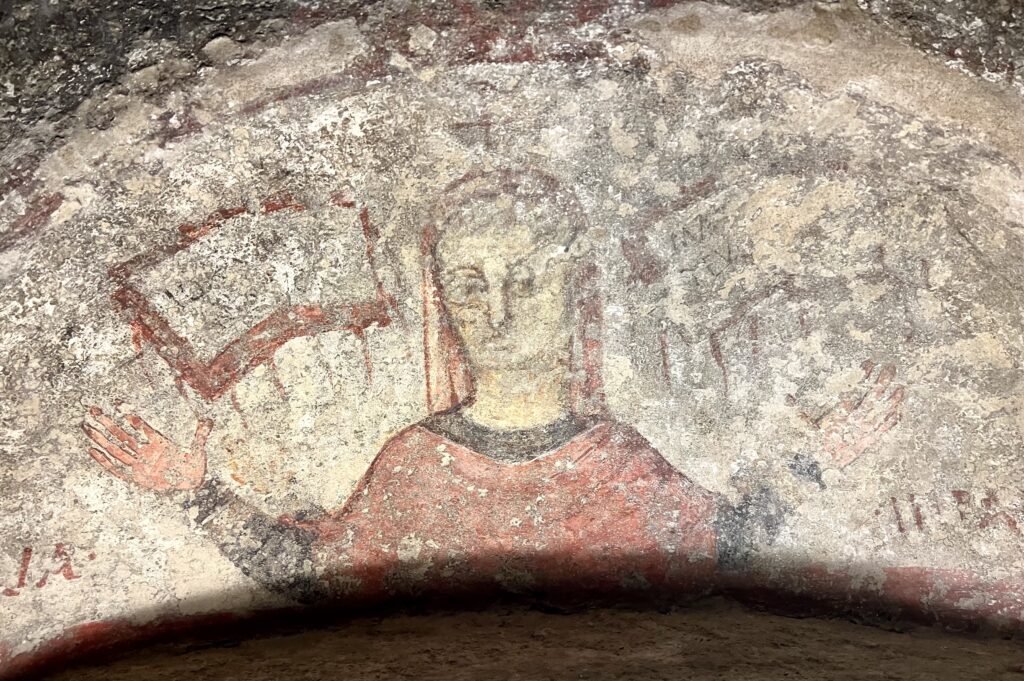
Are The Catacombs Of San Gennaro Worth Visiting?
I think the catacombs are definitely worth visiting. They’re a unique blend of history, art, and architecture.
They give you insight into an ancient time, and the nature of Christian religious beliefs and customs. I would go again just for the frescos!
Other Tips
It is a bit chilly underground. So, even in summer, you may want to bring a light sweater or jacket.
The catacombs are also dimly lit. That’s for preservation purposes. There’s also nowhere to sit. So, plan to spend an hour on your feet and wear comfy shoes.
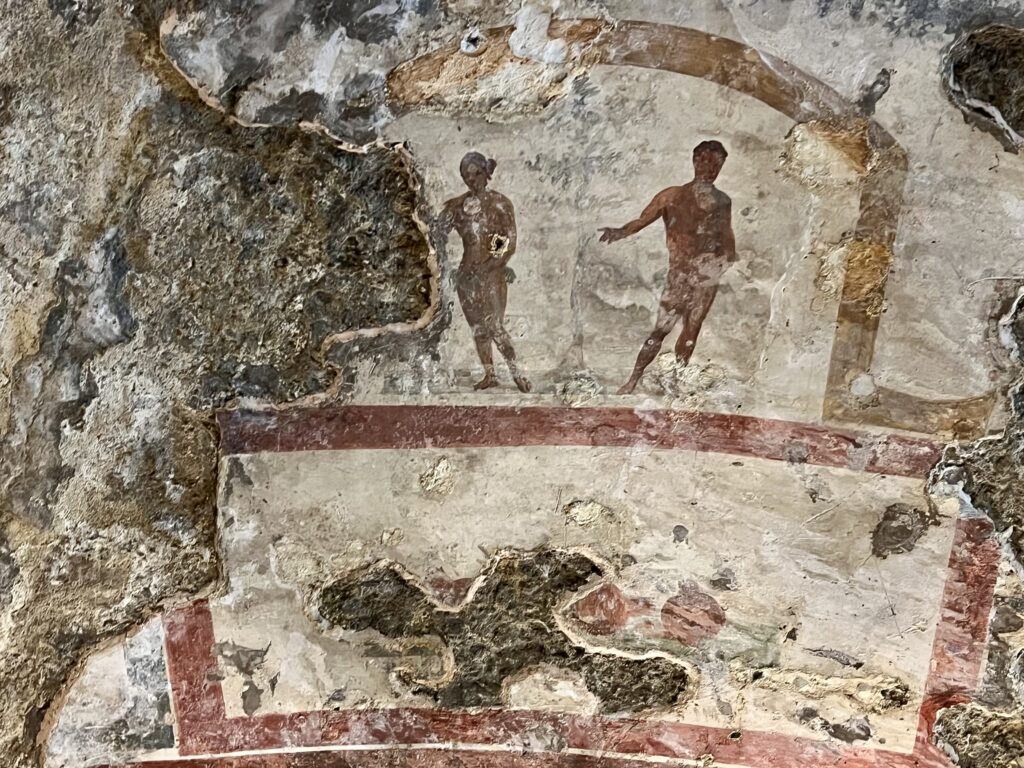
If you are an art lover, you can combine a visit to the catacombs with a visit to the Capodimonte Museum. It’s Naples premiere art museum and just stuffed with Renaissance and Baroque masterpieces.
You’ll need to pre-book a timed entry ticket if you want to see Caravaggio’s masterpiece there, The Flagellation of Christ.
I hope you’ve enjoyed my guide to visiting the Catacombs of San Gennaro. You may enjoy these other Italy travel guides and resources:
- 3 day itinerary for Rome
- 5 day itinerary for Rome
- 1 day itinerary for Vatican City
- 3 day itinerary for Florence
- 2 day itinerary for Venice
- 1 day itinerary for Milan
- 1 day itinerary for Siena
- One week in Umbria
- 10 days in Italy itinerary
- 10 day itinerary for Tuscany
- 12 ways to spend 1 week in Italy
- 2 weeks in Sicily itinerary
If you need a guide to the Catacombs of San Gennaro, pin it for later.

